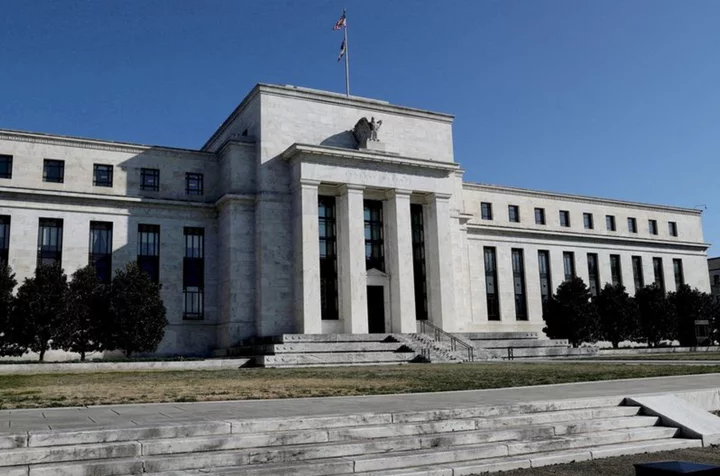By Michael S. Derby
A couple of regional Federal Reserve presidents recently have signaled an openness to examining whether 2% is the right setting for the U.S. central bank's inflation target, although the bar for change is high and any debate is well down the road.
"Could we revisit that? Sure. But we can't revisit it until we get inflation back to 2%," Minneapolis Fed President Neel Kashkari said in an interview with Reuters on Monday. Once the U.S. central bank gets inflation back to 2% "then we can have the debate about what should be the right target," he said.
In an appearance at the end of April, Philadelphia Fed President Patrick Harker also hinted the target could get a fresh look at some point. Like Kashkari, Harker said "we're not changing it right now," which appeared to leave open the option of altering it later without calling for a change.
The Fed adopted its 2% target in 2012, formalizing a practice in place for years. Since then, the central bank has sought to guide price pressures to that level, viewing misses to the high and low side as something to avoid. It amended the target as part of a broad review of its operating principles in 2020 to pursue the 2% level on average, just as it was about to confront the worst inflation pressures in four decades.
Any push to change it would be tough, as Fed officials have strongly defended the target throughout its existence.
At a press conference following the end of the central bank's March 21-22 policy meeting, Fed Chair Jerome Powell said he opposed any changes and noted that an unwavering commitment to the 2% target helps instill public confidence that even if price pressures are exceeding it the central bank will do what it takes to get them back down to desired levels.
Powell himself committed the Fed to reviewing its operating framework every five years, which means a reexamination of the current inflation target could realistically be put on the table in 2025.
One wrinkle in that idea is that, as recently as March, the median view among Fed officials was for inflation to still be fractionally above 2% by the end of that year. With even those open to revisiting it, like Kashkari, saying the debate ought not be joined until inflation returns to the target, any substantive discussion among policymakers may be even further away, unless inflation subsides more quickly than they currently expect.
'QUITE A CHALLENGE'
For almost as long as the Fed has had the inflation target, the level itself has been the subject of scrutiny.
In the years immediately after adopting it, inflation was consistently below 2%, leading some economists to contend that raising the target would boost inflation expectations and help real-world inflation move up toward 2%. Now, with inflation still running at more than twice the target despite 14 months of aggressive rate increases, some observers reckon raising the target would take pressure off the Fed to keep monetary policy tight and lower the risk that returning inflation to the 2% level would drive unemployment to painful levels.
The argument has resonated in some quarters because most agree the easiest part of lowering inflation is done, and the final steps to hitting the 2% target risks real economic pain.
"Getting to two is not going to be trivial, and it may be very hard for the Fed to say, well, we have to go to two and we're going to keep interest rates very high" given the possible collateral damage of such a path, said Olivier Blanchard, the International Monetary Fund's chief economist from 2008 to 2015 and now a senior fellow at the Peterson Institute for International Economics.
Blanchard, who said he thinks the target should probably be set at 3%, told a Brookings Institution conference on Tuesday that he expects to see a debate over whether 2% is the correct goal once inflation gets closer to that level. He said the Fed may in practice not press the final stages of getting to the target as aggressively as it has so far, mindful of what damage that might do to the economy.
Speaking on the same panel, Ben Bernanke, who was Fed chief when the 2% target was adopted, said "I agree in theory" with Blanchard's view. But he said practical realities will likely thwart any change, in large part because while the Fed avoided getting the U.S. Congress to sign off on adopting the 2% goal, raising it probably would require buy-in from legislators.
That's risky, Bernanke said, because the involvement of elected leaders could end up with a target the Fed itself might not want. "Given where we are today as opposed to starting from, you know, the original position ... it's quite a challenge to make that change."
(Reporting by Michael S. Derby; editing by Paul Simao)

